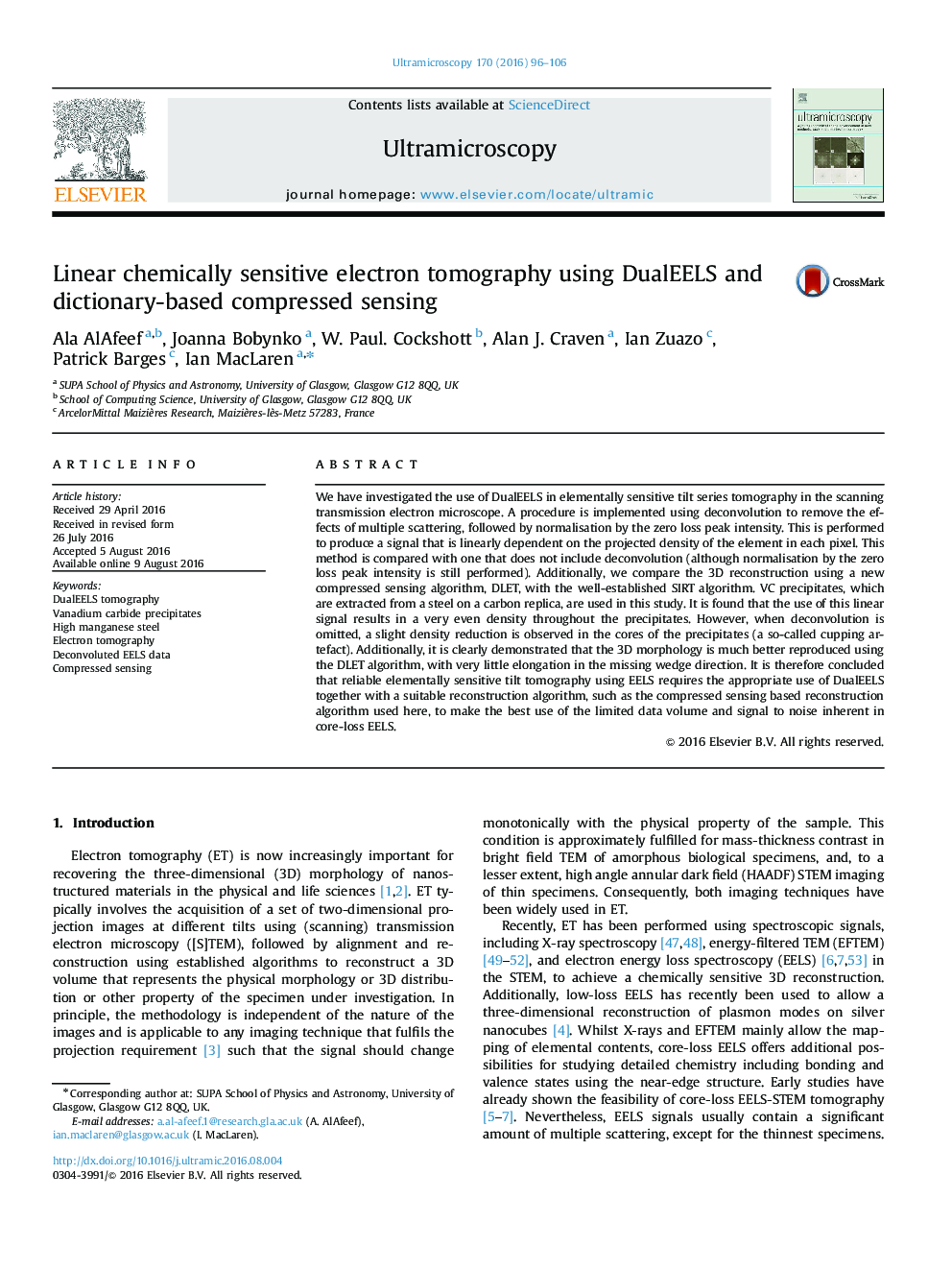| Article ID | Journal | Published Year | Pages | File Type |
|---|---|---|---|---|
| 1677347 | Ultramicroscopy | 2016 | 11 Pages |
Abstract
We have investigated the use of DualEELS in elementally sensitive tilt series tomography in the scanning transmission electron microscope. A procedure is implemented using deconvolution to remove the effects of multiple scattering, followed by normalisation by the zero loss peak intensity. This is performed to produce a signal that is linearly dependent on the projected density of the element in each pixel. This method is compared with one that does not include deconvolution (although normalisation by the zero loss peak intensity is still performed). Additionally, we compare the 3D reconstruction using a new compressed sensing algorithm, DLET, with the well-established SIRT algorithm. VC precipitates, which are extracted from a steel on a carbon replica, are used in this study. It is found that the use of this linear signal results in a very even density throughout the precipitates. However, when deconvolution is omitted, a slight density reduction is observed in the cores of the precipitates (a so-called cupping artefact). Additionally, it is clearly demonstrated that the 3D morphology is much better reproduced using the DLET algorithm, with very little elongation in the missing wedge direction. It is therefore concluded that reliable elementally sensitive tilt tomography using EELS requires the appropriate use of DualEELS together with a suitable reconstruction algorithm, such as the compressed sensing based reconstruction algorithm used here, to make the best use of the limited data volume and signal to noise inherent in core-loss EELS.
Related Topics
Physical Sciences and Engineering
Materials Science
Nanotechnology
Authors
Ala AlAfeef, Joanna Bobynko, W. Paul. Cockshott, Alan J. Craven, Ian Zuazo, Patrick Barges, Ian MacLaren,
